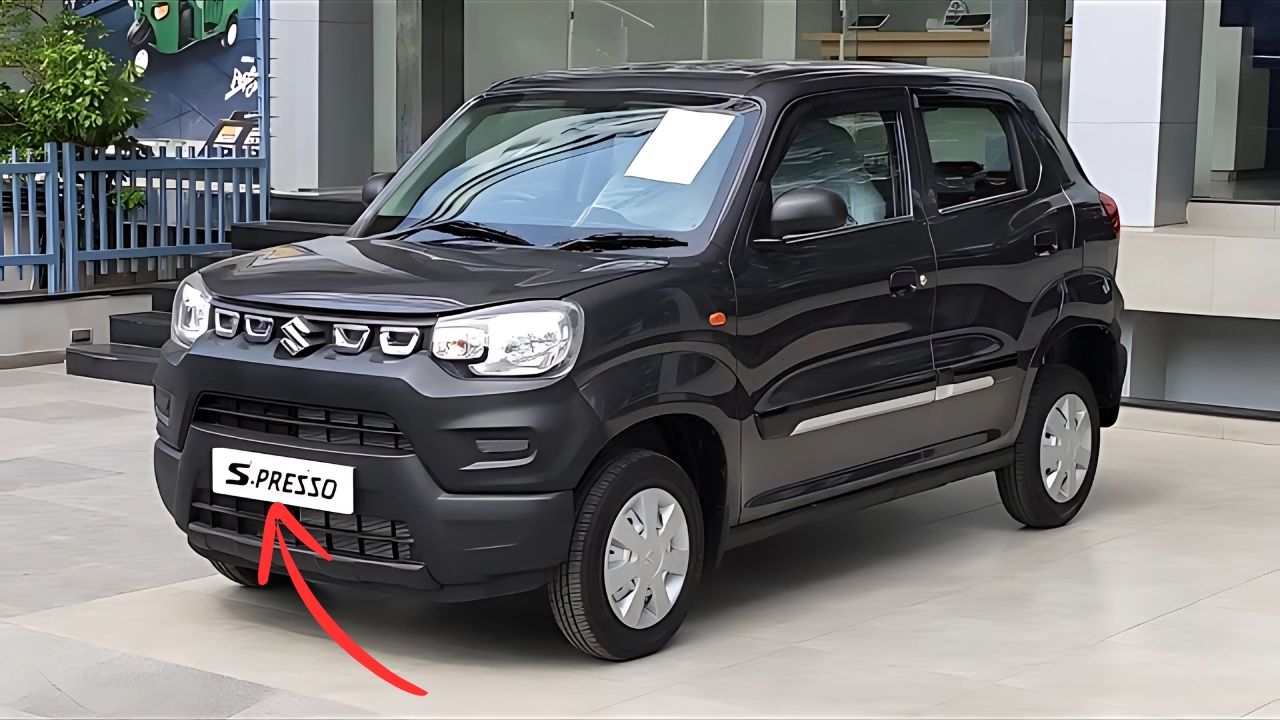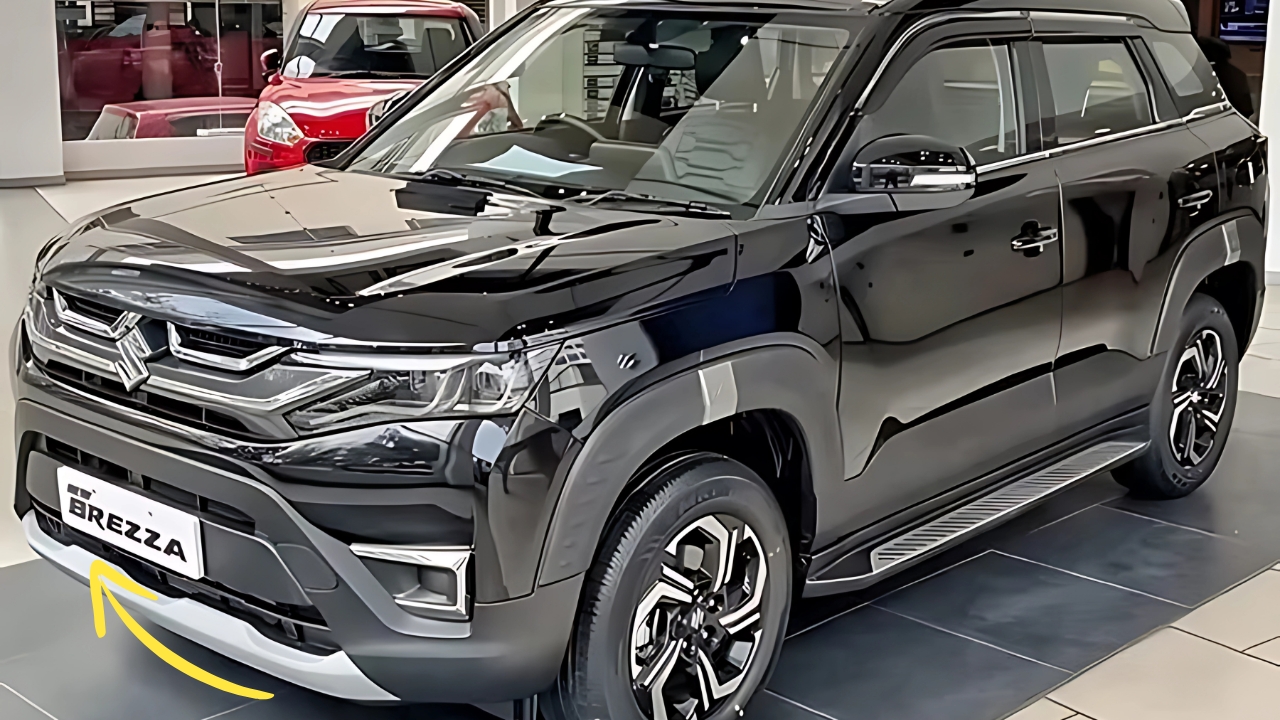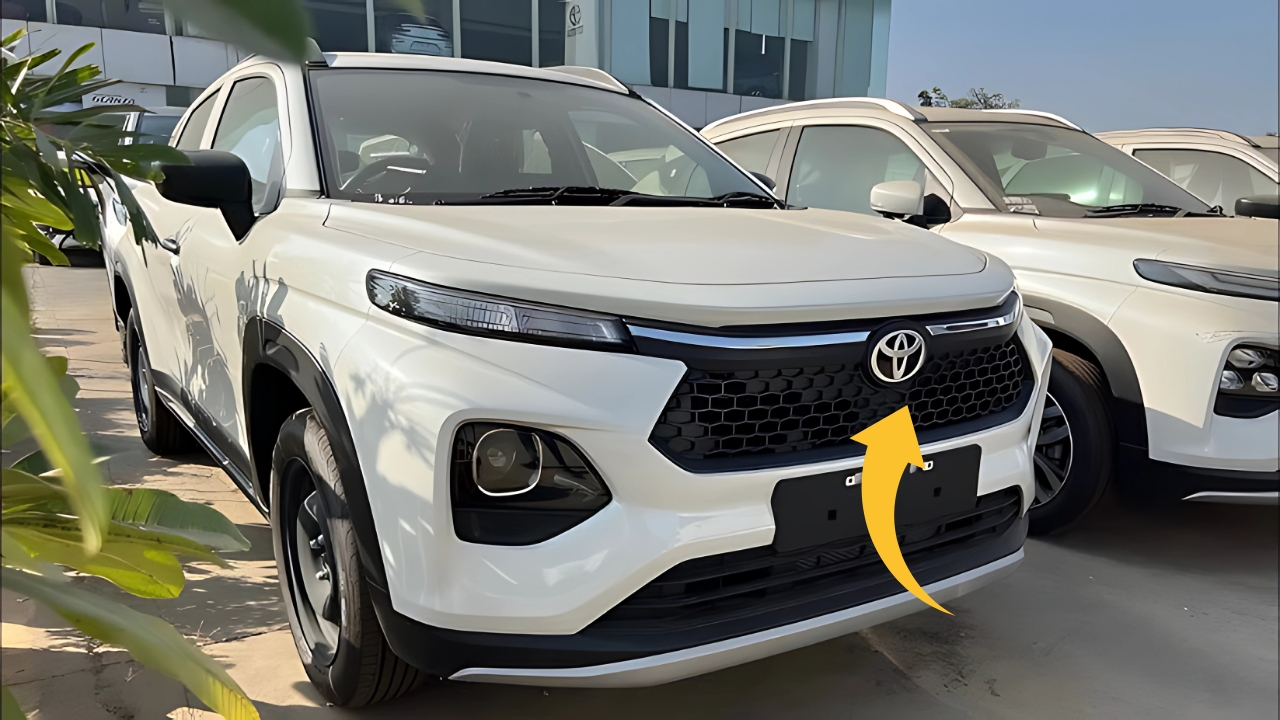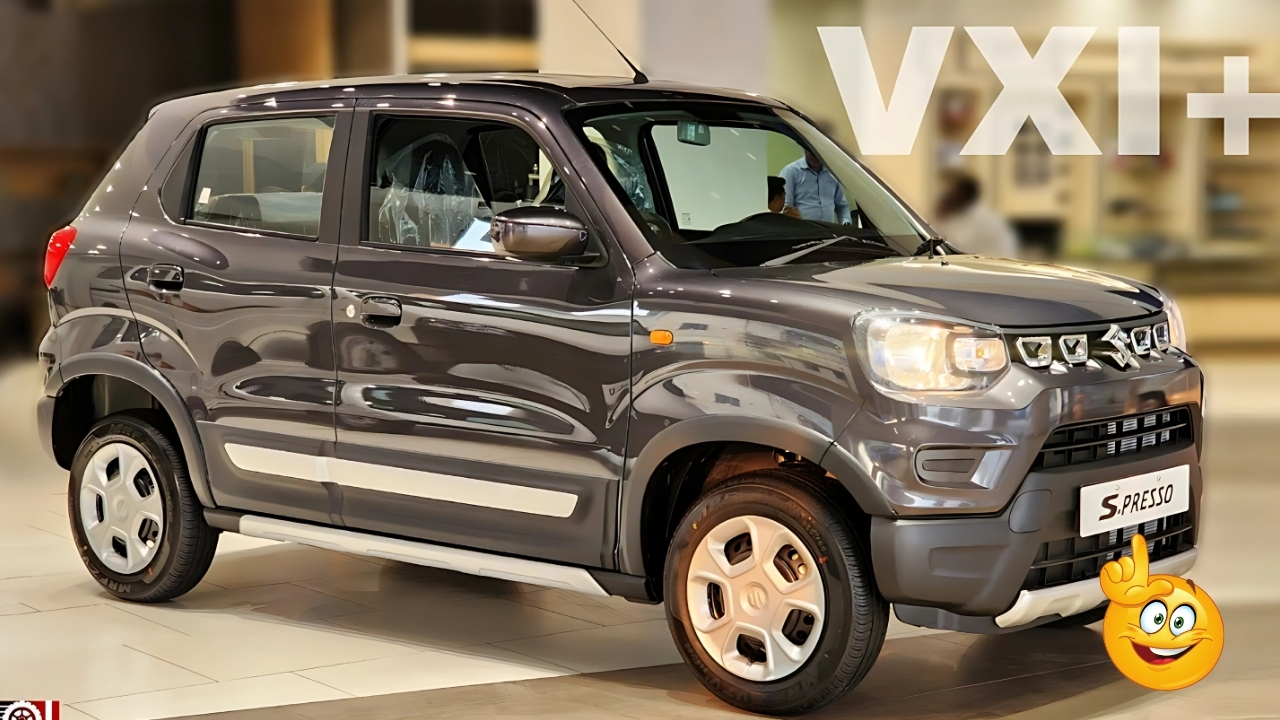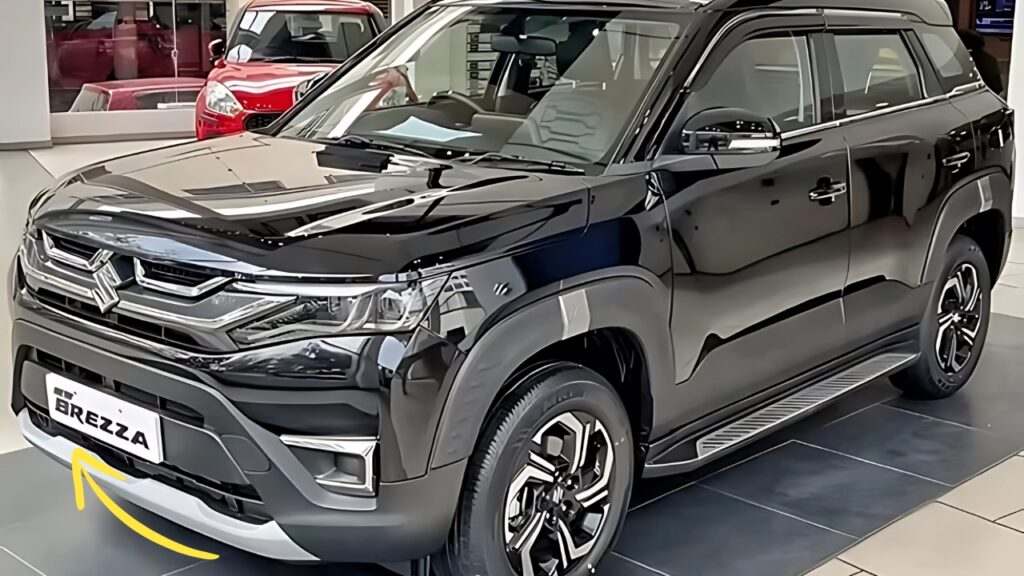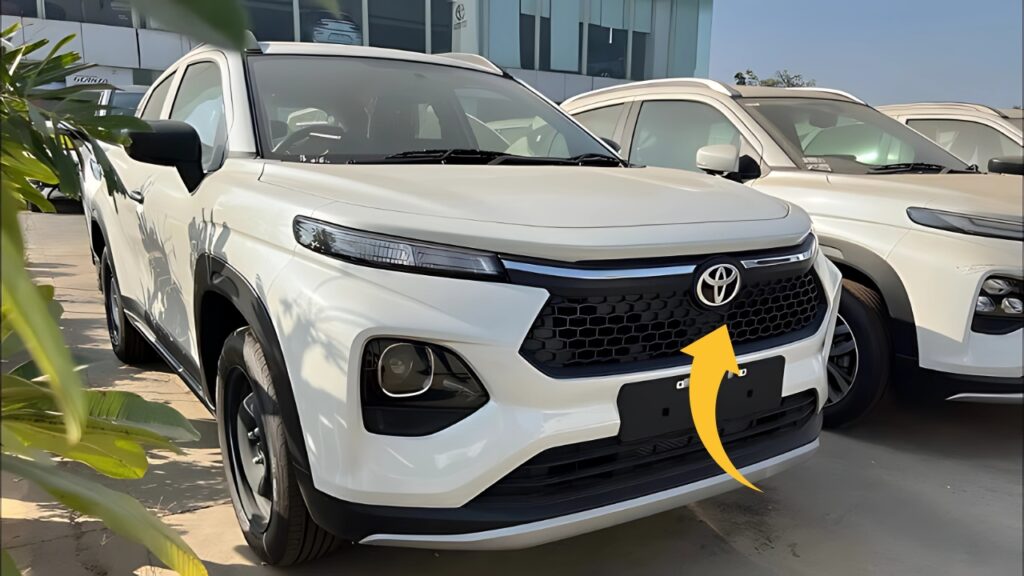Maruti Suzuki S-Presso: In the constantly evolving landscape of Indian automotive design, certain vehicles emerge that challenge conventional categorization.
The Maruti Suzuki S-Presso stands as perhaps the most distinctive example of this boundary-blurring approach – a vehicle that defies straightforward classification, embodying elements of both hatchback practicality and SUV presence in a package barely larger than a conventional city car.
Since its introduction to the market, this “micro-SUV” has polarized opinions while simultaneously capturing a significant slice of the entry-level segment traditionally dominated by more conventional designs.
The S-Presso represents Maruti Suzuki’s recognition of changing consumer preferences, where the traditional small hatchback – once the default choice for first-time buyers – increasingly faces competition from vehicles offering greater perceived value through distinctive styling and an elevated driving position.
In creating this unconventional offering, India’s largest automaker has effectively rewritten certain rules of the entry-level segment, prioritizing character and presence over the conservative approach that has long defined affordable transportation in the subcontinent.
Maruti Suzuki S-Presso: Design Philosophy Boldness in Miniature
The exterior aesthetic of the S-Presso immediately communicates its refusal to blend into the background. The front fascia features a distinctive squared-off grille with bold geometric elements that establish visual links to larger SUVs while maintaining a playful, approachable character.
The unusually tall proportions – the S-Presso stands 3,565mm long, 1,520mm wide, but a substantial 1,564mm tall – create a silhouette unlike virtually anything else on Indian roads at this price point.
This height-forward design serves both aesthetic and practical purposes. Visually, it grants the S-Presso a commanding presence that belies its compact footprint, allowing it to project confidence alongside larger vehicles.
Practically, it translates to excellent headroom and a driving position that offers the elevated sightlines typically associated with SUVs, addressing a key consumer desire without the dimensional challenges of a genuinely large vehicle.
The wheel arch cladding and relatively generous 180mm ground clearance further reinforce the quasi-SUV positioning, providing practical benefits for navigating rough urban roads while simultaneously signaling adventure-readiness to aspirational buyers.
The minimalist approach to exterior detailing – note the simple halogen headlamps and straightforward tail light design – reflects both cost considerations and a focus on bold proportions rather than intricate surfacing as the primary design statement.
Color options reveal Maruti’s understanding of the target demographic, with vibrant choices like Sizzling Red and Solid Starry Blue alongside more conservative options.
These brighter hues particularly complement the S-Presso’s distinctive shape, enhancing its youthful character and allowing personalization without costly customization.
Cabin Experience: Practical Innovation
The interior of the S-Presso continues the theme of unconventional thinking within tight constraints. The dashboard architecture abandons the traditional horizontal orientation in favor of a center-focused design that positions all key information and controls in a circular housing in the middle of the dash.
This arrangement, inspired by trendy digital watches according to Maruti’s designers, creates a distinctive focal point while simultaneously streamlining manufacturing by facilitating both left and right-hand drive configurations with minimal changes.
The elevated seating position translates to remarkably easy ingress and egress – a significant practical advantage for older users or those with mobility limitations, despite the vehicle’s youth-oriented marketing.
Once seated, the driver benefits from excellent visibility through the expansive greenhouse, with the compact exterior dimensions and raised vantage point combining to make the S-Presso exceptionally maneuverable in crowded urban environments.
Materials throughout the cabin prioritize durability over luxury, with hard-wearing textured plastics dominating most touchpoints. The fabric upholstery similarly emphasizes resilience, with patterns and textures chosen to mask inevitable wear rather than showcase premium ambitions.
This pragmatic approach aligns with the vehicle’s positioning and target market, recognizing that functional reliability trumps soft-touch surfaces for many first-time buyers.
Despite these cost-conscious decisions, thoughtful ergonomic touches abound. The power window switches mounted on the center console rather than the doors represent an unusual approach that nonetheless places these frequently used controls within easy reach.
Storage solutions, including the split glovebox, generous door pockets, and strategically placed cubbies, demonstrate understanding of how vehicles in this segment serve as extensions of their owners’ living spaces, particularly in dense urban environments where personal space comes at a premium.
Driving Dynamics: Urban Agility
The mechanical package underpinning the S-Presso prioritizes efficiency and maneuverability – the primary virtues for its intended operating environment.
The 1.0-liter K10B three-cylinder petrol engine produces 67 horsepower and 90 Nm of torque, figures that appear modest on paper but prove entirely adequate given the vehicle’s approximately 760kg kerb weight.
This power-to-weight ratio ensures sprightly acceleration at city speeds, with the engine’s eager character compensating for its small displacement.
Transmission options include a 5-speed manual that offers precise if somewhat long throws, and an automated manual transmission (AMT) that trades some shift refinement for the convenience of two-pedal operation without significantly compromising fuel efficiency.
The latter proves particularly valuable in stop-start urban traffic, where the cognitive load reduction of automatic operation outweighs the occasionally hesitant shifts characteristic of this transmission type.
The suspension setup – MacPherson struts front and torsion beam rear – delivers a ride quality that successfully balances the competing demands of comfort and control.
The relatively soft tuning absorbs urban road imperfections effectively, while the tall body inevitably introduces some roll during aggressive cornering. This characteristic actually serves as a natural speed limiter, encouraging a driving style that aligns with the vehicle’s practical purpose rather than sporting pretensions.
The electric power steering deserves particular mention for its calibration, offering finger-light effort at parking speeds while weighting up sufficiently at higher velocities to provide adequate directional stability.
The 9.6-meter turning radius further enhances the S-Presso’s urban credentials, allowing U-turns in spaces that would defeat larger vehicles and simplifying the parking challenges that define city driving.
Technology Integration: Focused Functionality
The technological package offered in the S-Presso reflects a clear understanding of contemporary priorities among younger buyers.
The 7-inch touchscreen infotainment system – available in higher trim levels – provides the smartphone connectivity that has transformed from luxury to necessity, with both Apple CarPlay and Android Auto integration ensuring familiar interfaces regardless of device preference.
This system’s placement at the top of the center console positions it directly in the driver’s line of sight, minimizing distraction while maximizing accessibility.
The screen itself offers respectable resolution and responsiveness, avoiding the laggy performance that plagued earlier attempts at bringing touchscreen technology to entry-level segments.
Safety equipment includes dual front airbags, ABS with EBD, rear parking sensors, and seat belt reminders – meeting regulatory requirements while providing essential protection.
The underlying HEARTECT platform, with its high-tensile steel structure, delivers improved crash performance compared to previous-generation entry-level offerings, addressing growing consumer awareness of safety considerations even at accessible price points.
Convenience features focus on genuine utility rather than specification-sheet padding. The factory-fitted audio system includes USB and Bluetooth connectivity even in mid-range variants, acknowledging the centrality of personal audio to the contemporary driving experience.
Power steering, central locking, and front power windows likewise represent the baseline expectations for today’s buyers rather than premium indulgences.
Comparative Standing: The S-Presso in Context
| Feature | Maruti Suzuki S-Presso | Renault Kwid | Datsun redi-GO | Tata Tiago |
|---|---|---|---|---|
| Engine Displacement | 1.0L K10B | 0.8L/1.0L | 0.8L/1.0L | 1.2L Revotron |
| Power Output | 67 HP | 54/68 HP | 54/68 HP | 86 HP |
| Torque | 90 Nm | 72/91 Nm | 72/91 Nm | 113 Nm |
| Ground Clearance | 180 mm | 184 mm | 185 mm | 170 mm |
| Fuel Efficiency (Claimed) | 21.7 km/l | 22.0 km/l | 22.0 km/l | 23.8 km/l |
| Boot Space | 270 liters | 279 liters | 222 liters | 242 liters |
| Height | 1564 mm | 1474 mm | 1534 mm | 1535 mm |
| Starting Price (Ex-showroom) | ₹4.25 lakhs | ₹4.64 lakhs | ₹3.98 lakhs | ₹5.40 lakhs |
Within this competitive set, the S-Presso carves a distinct position through its SUV-inspired styling and class-leading height, despite not offering best-in-segment power or boot space.
The Kwid pioneered this micro-SUV approach but offers less interior room, while the redi-GO shares mechanical underpinnings with the Renault but lacks the interior refinement of the S-Presso. The Tiago provides substantially more power and a more conventional hatchback experience but at a higher price point.
The S-Presso’s competitive advantage lies primarily in the Maruti Suzuki ownership experience – the extensive service network, parts availability, and strong resale value that continue to drive the brand’s dominant market position across segments.
These practical considerations often outweigh specification advantages among value-conscious buyers, particularly those in smaller cities and towns where dealer support for some competitors remains limited.
Key Points About the Maruti Suzuki S-Presso:
Distinctive Design Language: Unique tall-boy styling with SUV-inspired elements creates standout presence despite compact dimensions.
Commanding Visibility: Elevated seating position provides SUV-like visibility while maintaining hatchback maneuverability.
Space Efficiency: Intelligently packaged interior maximizes usable space within minimal exterior footprint.
Urban-Friendly Dynamics: Light controls, tight turning radius, and compact dimensions excel in congested environments.
Frugal Efficiency: The K10B engine delivers impressive fuel economy in both city and highway driving conditions.
Service Accessibility: Benefits from Maruti’s unparalleled service network with standardized maintenance costs.
Strong Resale Value: Brand reputation ensures better-than-average value retention compared to segment alternatives.
Customization Options: Available accessory packages allow personalization to suit individual tastes.
Adequate Ground Clearance: 180mm clearance handles urban obstacles and moderate unpaved roads with confidence.
Value Proposition: Offers SUV-like presence and practical benefits at entry-level hatchback pricing.
Ownership Experience: The Maruti Advantage
The ownership proposition extends well beyond the vehicle itself to encompass the entire ecosystem that has made Maruti Suzuki India’s dominant automotive brand for decades.
The company’s service network reaches even remote areas where competitors maintain limited or no presence, ensuring that routine maintenance remains convenient regardless of location.
This infrastructure proves particularly valuable for first-time owners or those in smaller towns, where service accessibility often outweighs minor specification advantages when making purchase decisions.
Maintenance costs benefit from the engine’s proven technology and the company’s economies of scale, with consumable parts priced reasonably and service intervals standardized at 10,000 kilometers.
The transparent “Maruti Suzuki Service” pricing structure provides cost predictability that reduces ownership anxiety for budget-conscious buyers, while the availability of service packages allows upfront planning of maintenance expenditure.
Insurance costs similarly reflect the S-Presso’s pragmatic engineering, with premiums typically lower than segment alternatives due to the ready availability of replacement parts and straightforward repair procedures.
These considerations, while less glamorous than performance specifications or feature lists, significantly impact the total cost of ownership calculation that drives purchase decisions in this highly price-sensitive segment.
Maruti Suzuki S-Presso: Rethinking Entry-Level Mobility
The Maruti Suzuki S-Presso represents a thoughtful response to evolving consumer preferences in the entry-level segment.
By recognizing that today’s first-time buyers desire distinctiveness and perceived status alongside traditional virtues of affordability and efficiency, Maruti has created a vehicle that delivers emotional appeal without abandoning the practical considerations that remain essential at this price point.
The micro-SUV approach successfully addresses several contemporary urban challenges: it provides the visibility and confidence-inspiring seating position that make navigating congested roads less stressful, offers the ground clearance needed for deteriorating infrastructure, and maintains the exterior compactness essential for parking in space-constrained environments.
That it accomplishes this while projecting more character than conventional entry-level hatchbacks explains its market success despite divisive styling.
For young buyers seeking to make a statement with their first automotive purchase, older users valuing accessibility and visibility, or families requiring maximum utility from a minimal footprint, the S-Presso delivers a compelling package that transcends its modest specification sheet.
In doing so, it demonstrates that thoughtful design and clear understanding of user needs can create genuine innovation even within the strict constraints of affordable transportation.
